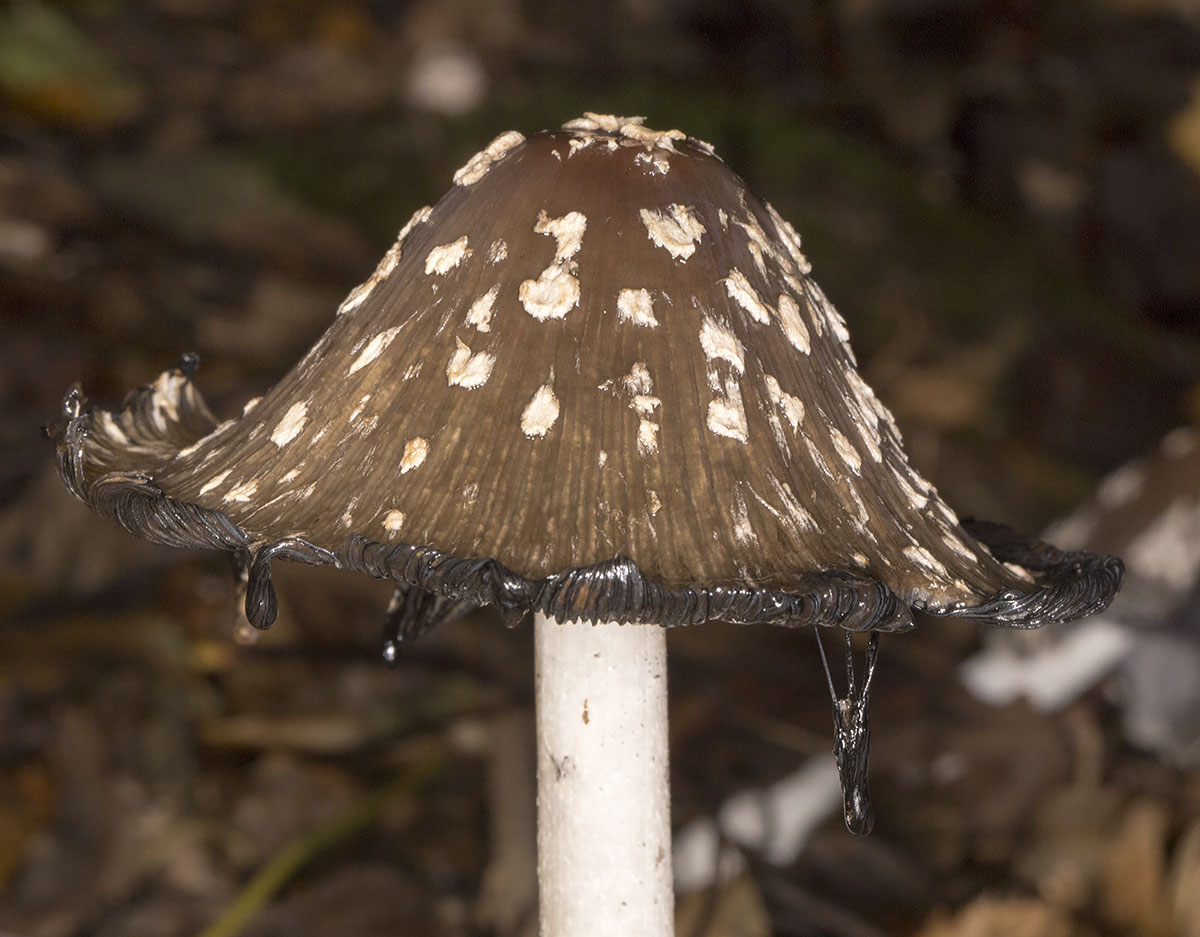 |
| The path down into the wood. Toy's Hill, 7 December 2013. |
Early in December I walked round some of Toy's Hill, through part of Scords Wood. I was looking out for anything still in flower .. and saw nothing. But it was an excellent walk. The first photo is the path down into the wood.
 |
| Bracken, Pteridium aquilinum, high in a Silver Birch. Toy's Hill, 7 December 2013. |
Not far down, I saw what looked like a fern growing high in a tree! When I got closer I saw it was an unusually tall stand of bracken, which grows differently; single leaf stems rising from the ground. It mush be quite dark here before leaf fall to make them grow so high.
 |
| View from the edge of the wood over the Weald. Toy's Hill, 7 December 2013. |
There was an amazing view over the Weald at one edge of the wood, with layered distances just like a traditional painted landscape. I would have liked to go down a little so that the photo would miss out those nearby branches, but the slope was too steep. That body of water in the middle distance must be Bough Beech Reservoir, much loved by bird fans.
I turned then, leaving the path, and walked up through the wood. This turned out to be tricky.
 |
| Fallen trees making it hard to climb up the hill. Toy's Hill, 7 December 2013. |
The whole hillside was like this, fallen tree after fallen tree, all laid across my path. They were all covered with moss, so it must be a damp environment. I had to climb over, under or around dozens of these.
 |
| Orange fungus crust on old deadwood. Toy's Hill, 7 December 2013. |
Suddenly, this caught my eye; a single piece of old deadwood covered with a bright orange fungus crust.
Eventually I came to a path and walked back up. Near the top I saw this:
 |
| Triceratops skull? Toy's Hill, 7 December 2013. |
You can see what I thought when I saw it. Maybe there are other dinosaurs that look more like this, but Triceratops was impressed on my mind as a child, so that's what came up. Regrettably, this is just wood.























